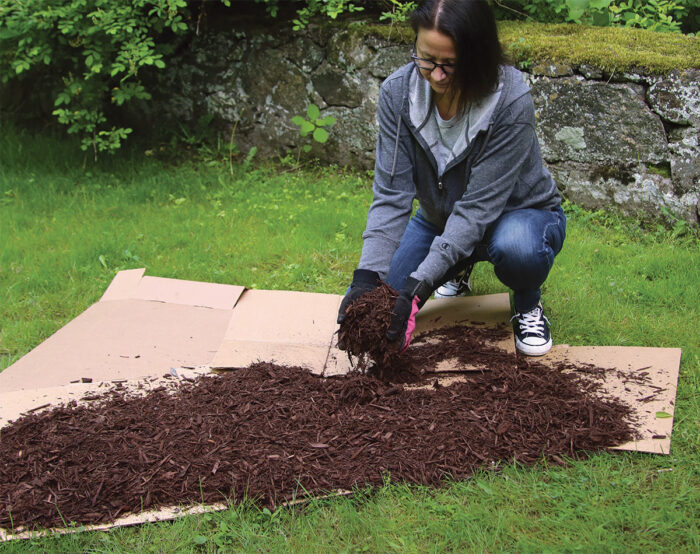
If you’ve ever started a new garden from scratch, then you’ve probably had to convert some amount of lawn into a planting bed. There are several ways to eliminate turf, including back-breaking digging and the spraying of herbicides, but the method I receive the most questions about is smothering, or sheet mulching.
Without a doubt, there are many benefits to mulching in general. Organic mulches such as pine bark, wood chips, pine straw, or leaves slow down water loss, suppress weeds, and even improve soil by adding organic matter as the mulch decomposes. In other words, adding an organic mulch doesn’t come with a whole lot of controversy—it’s good. The practice of sheet mulching, however, isn’t as cut-and-dried.
Learn how to sheet mulch step by step
Watch a video on how to sheet mulch
The background on sheet mulching and why gardeners do it
The term sheet mulching means different things to different people. To some, it’s “lasagna gardening” with many layers of organic materials; to others, it’s an attempt to recreate the type of natural layering that occurs in forests or meadows; to still others, it’s laying down a couple of sheets of newspaper and some wood chips. The common thread running through all of these techniques is that a sheet of some material, such as newspaper or cardboard, is placed over an area of ground and then covered with organic mulch.
Gardeners do this for two basic reasons—to wipe out weeds and to build rich, organic soil that will deliver nutrients and retain moisture for garden plants. To achieve this, gardeners employ two different types of sheet mulching: shallow and deep.
The difference between the two types is simple. Shallow sheet mulching involves a single, shallow layer of brown mulch (e.g., fallen leaves or wood chips), while deep sheet mulching consists of alternating layers of brown mulch and green mulch (e.g., freshly clipped grass) that can reach a total final depth of 2 or even 3 feet.
Go deep to build and enrich soil, and shallow to smother turf and weeds
Deep sheet mulching (or “lasagna gardening”) is usually done with the intention of having multiple layers of green and brown organic mulch and a paper material layer decompose over the course of a few months to a year (or more) to form garden beds for annuals and/or vegetables. Shallow sheet mulching, with just a paper material layer and a few inches of brown organic mulch on top, is usually done around vegetables or landscape plants.
Shallow sheet mulching can also be very effective for smothering existing vegetation and preventing new weeds from establishing, as well as for contributing to the building of healthy soil over time. The paper material used is typically newspaper (up to eight layers thick) or untreated cardboard. Because a blanket of this decomposable material blocks sunlight and forms a physical barrier, it is more effective than organic mulch alone at smothering existing weeds and suppressing the growth of new weeds.
After the paper material is placed over the area, about 2 to 4 inches of organic mulch, such as wood chips, is placed over the top. If you are trying to knock out a patch of lawn to prepare for a new bed or to clear some grass in an area so that your trees and shrubs don’t have to compete with any other greenery, then this technique is about as good as it gets. You can think of it as mulch on steroids. It does all of the things that regular mulch does, but even more effectively.
Deep sheet mulching also suppresses weeds and relies on natural composting processes to change multiple layers of organic material into soil where new plants will grow. When enough time for composting is given, this process is great for enriching the soil.
What are the downsides to sheet mulching?
There are some potential drawbacks to consider prior to using sheet mulches. The fact that sheet mulching covers an area so completely makes it effective, but it also gives it the potential to have some negative effects on the soil. There is a danger that water and oxygen might have trouble passing through the mulched layer to infiltrate the soil. That, of course, would make it a less-than-desirable practice to consider using around your plants.
In an article published in the journal Soil and Tillage Research, Khurram Shahzad and collaborators examined the gas exchange of oxygen and carbon dioxide through various mulches, including a sheet-mulching system utilizing cardboard with wood chips. In this study, soil oxygen levels never reached a point where soil microorganisms would be negatively impacted. The authors concluded that mulches reduce the amount of carbon dioxide and oxygen that diffuse across the soil-atmosphere interface, but not enough to cause significant changes in the concentration of those gases when compared to bare soil. In other words, mulches, and even sheet mulches, probably won’t affect the amount of carbon dioxide or oxygen in the soil underneath them enough to damage soil microorganisms or plant roots. That’s good news!
But what about water? Sheet mulches are less permeable than regular mulches or soil, so it stands to reason that a good rain will not saturate soil under a sheet mulch as well as it will the soil outside of a sheet mulch. We have a lot of experience with that here at the University of North Carolina Charlotte Botanical Gardens. We sheet mulch around trees in certain areas of the gardens, and when we test the soil under this mulch after a rain, the area under the mulch is drier than the surrounding unmulched area. After a few days without rain, however, the amount of water under the unmulched area quickly declines, while soil under the region where sheet mulch was placed stays consistent. In other words, mulching helps maintain a certain moisture level without many peaks and valleys.
Generally speaking, sheet mulching has positive effects on the survival and health of plants. From Douglas fir to cabbage, sheet mulching has proven itself to be a useful tool for both commercial farmers and gardeners. Yes, you need to be mindful of its drawbacks, but at the end of the day it is worth the effort.
The positives outweigh the negatives
When you’re considering the sheet mulch method, look at the good and bad aspects to determine if it’s right for you.
Pros
- Very effective at smothering and blocking weeds
- Helps to build the soil as it decomposes
- Helps to maintain a consistent amount of moisture at the roots
Cons
- Depending on exact layer makeup and intended purpose, it may break down faster or slower than you prefer
- Can limit water infiltration
How to Sheet Mulch
Sheet mulching can be done any time of the year, but keep in mind that if you are deep sheet mulching, the layers of mulch take a considerable amount of time to decompose and for the area then to be ready for planting—so you need to plan accordingly. Fall is a fitting time to lay down your layers to allow the decomposing process to begin and slowly progress through the winter months. Shallow sheet mulching takes less time, and spring is a good time to begin (before the lawn and weeds really get growing). No matter when sheet mulching is done, here are the basic steps we follow at the UNC Charlotte Botanical Gardens.
Materials needed
Although the items needed to sheet mulch are simple, remember that this application is temporary. Newspaper or cardboard and an organic mulch are going to break down and enrich the soil with organic matter. As the layers decompose, permeability will increase until, eventually, they become part of the soil. This breakdown can take a few months to a couple of years; when that happens, the best approach is simply to place more mulching material over the previous material.
 |
 |
 |
Newspaper or untreated cardboard
Brown mulch, such as shredded bark
Green mulch, such as grass clippings (only if you plan to deep sheet mulch)

Step 1: Soak the site
The day before you put down your layers, deeply water the area you’re going to sheet mulch (if it is not already wet from rain).
Step 2: Chop down the greenery
Cut the grass or existing vegetation down to the ground, leaving the clippings or debris in place.
Step 3: Put down a paper layer
Cover the area with newspaper (one to three sheets thick) or a single layer of untreated cardboard, overlapping the edges of the material. Some gardeners go up to eight sheets thick with their newspaper to prolong coverage and vegetation suppression, especially when smothering turf.
Step 4: Cover with mulch
Top the paper layer with 2 to 4 inches of an organic brown mulch. This mulch can take many forms, but we often use dried leaves, shredded bark, or wood chips. Some gardeners like to wet the paper material before putting down the brown mulch, but we have equal success when we skip this watering.
Step 5: Add more layers if you’re going deep
If you’re deep sheet mulching, add additional 2- to 4-inch-deep alternating layers of green mulch (such as grass clippings) and brown mulch.
- Brown mulch
- Green mulch
- Brown mulch
- Newspaper/cardboard
- Vegetation (with left-behind clippings)
- Soil
Step 6: Keep the area moist
During dry periods, give the area a thorough watering weekly while the sheet mulch is decomposing.
Jeff Gillman, Ph.D., author of The Truth About Organic Gardening, is the director of the University of North Carolina Charlotte Botanical Gardens.
Illustrations: Jessica Daigle
Jeff Gillman, Ph.D., author of The Truth About Organic Gardening, is the director of the University of North Carolina Charlotte Botanical Gardens.
Fine Gardening Recommended Products

Gardena 3103 Combisystem 12-Inch To 20-Inch Adjustable Metal Fan Rake Head
Fine Gardening receives a commission for items purchased through links on this site, including Amazon Associates and other affiliate advertising programs.

Spear & Jackson 4930FZ Razorsharp Telescopic Tree Pruner
Fine Gardening receives a commission for items purchased through links on this site, including Amazon Associates and other affiliate advertising programs.
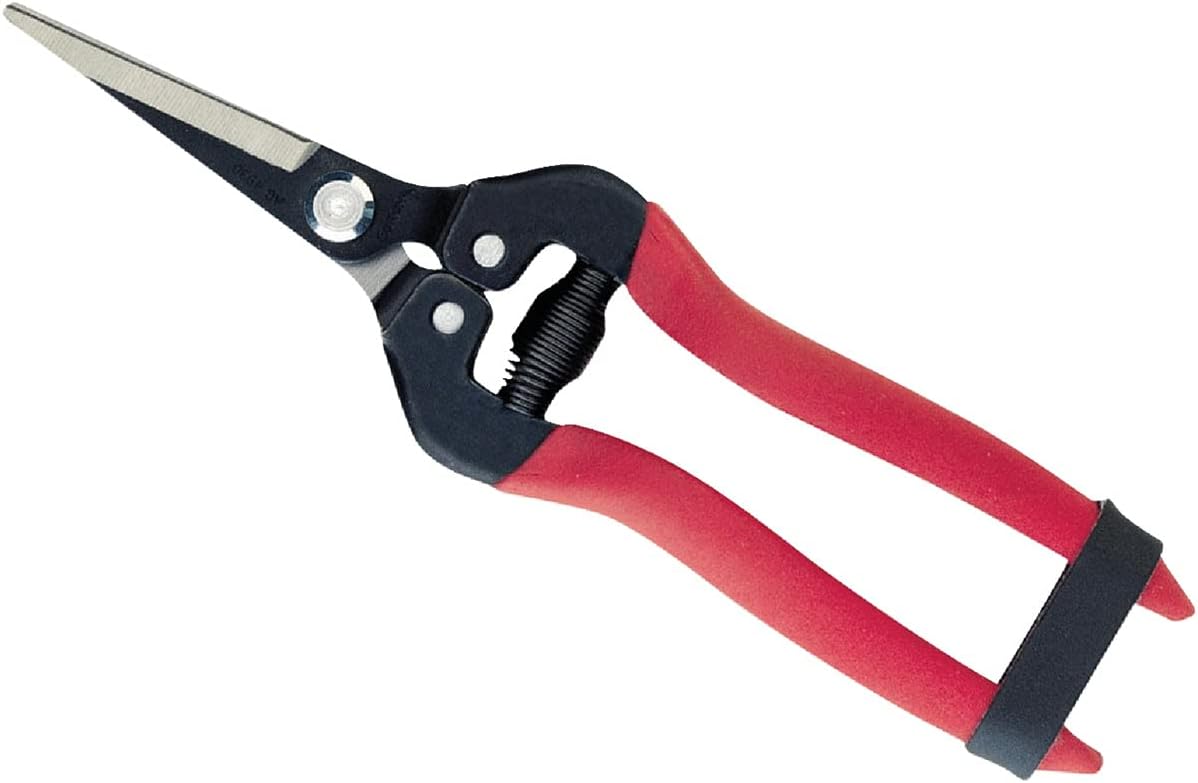
Corona AG 4930 Long Straight Snip, Tempered Steel
Fine Gardening receives a commission for items purchased through links on this site, including Amazon Associates and other affiliate advertising programs.


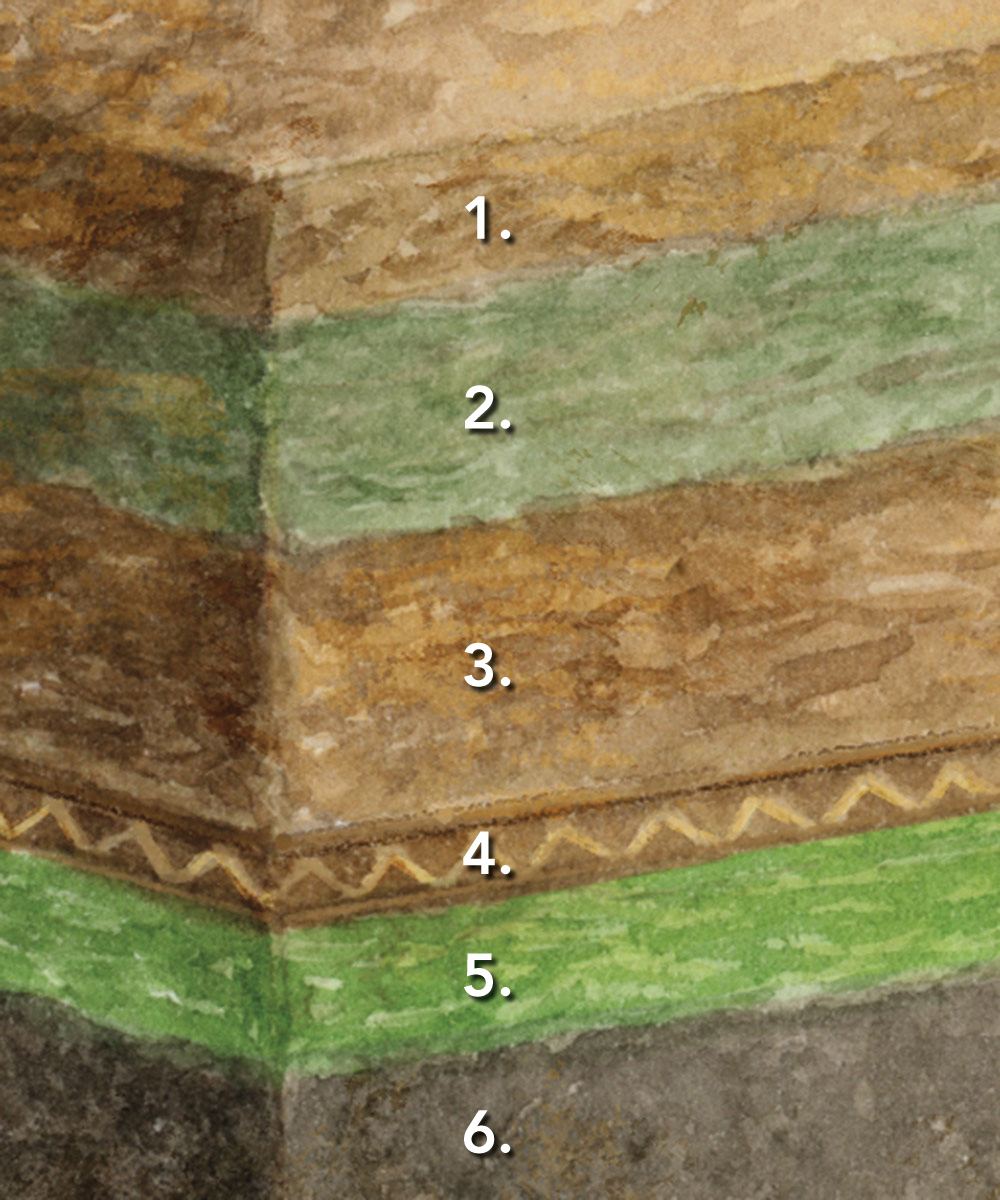

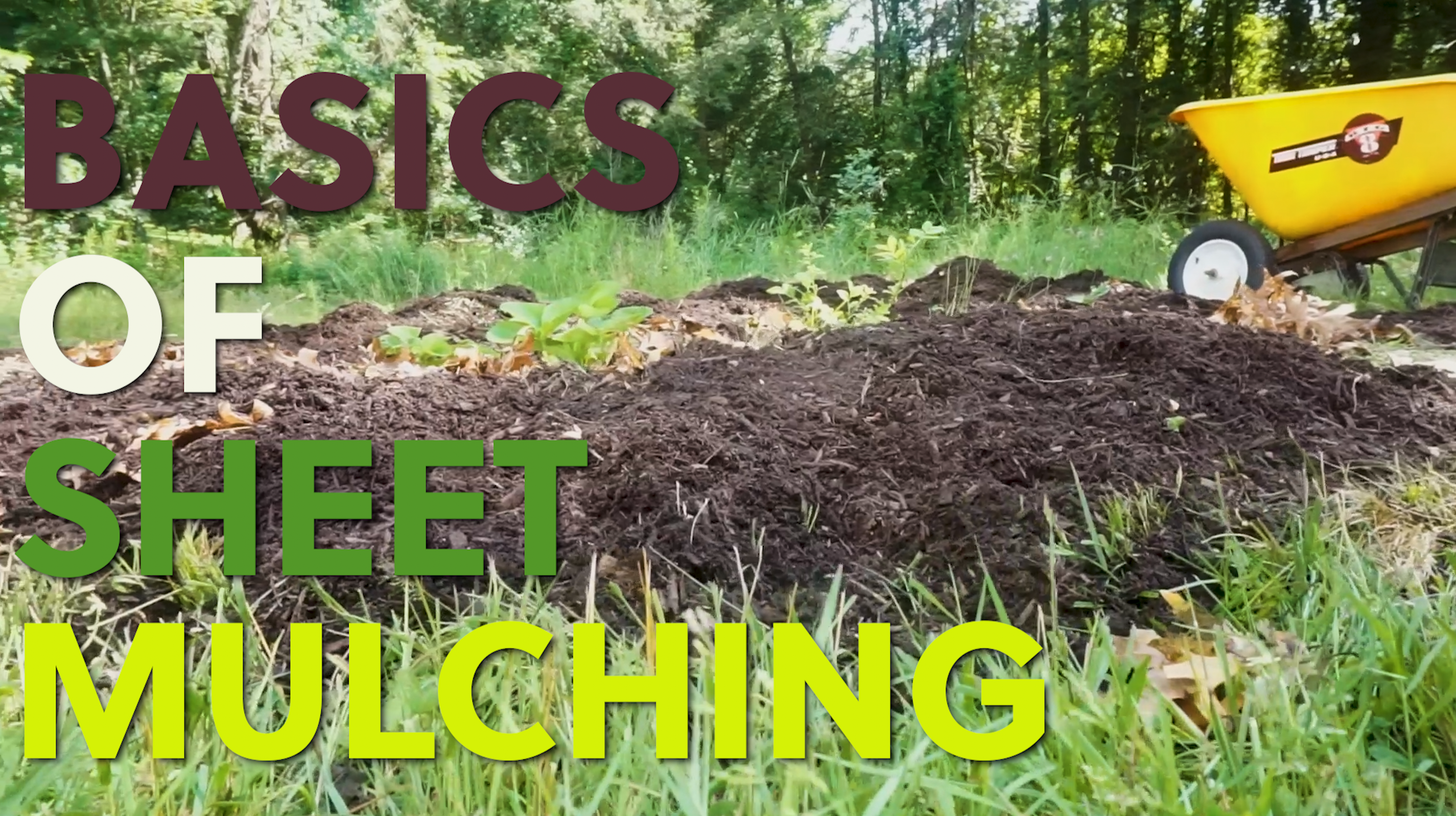
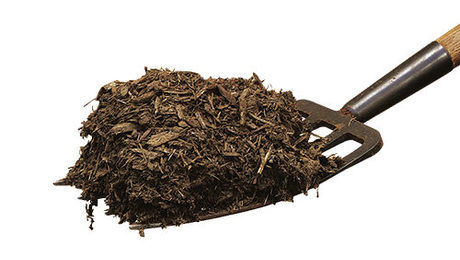














Comments
Log in or create an account to post a comment.
Sign up Log in